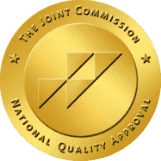The Evolution Of Neurofeedback
Ridding the body and mind of an addiction can obviously be a daunting task. And for generations, there has been a traditional set of tools that treatment centers use when combating these issues. Therapy being one. Detox being another. In the last two decades, however, a newer technique has been incorporated into the recovery movement (and embraced by sites like Psychology Today). That would be neurofeedback; a technological advancement that has proven to be successful in areas like depression, insomnia, PTSD and addiction.
As mentioned above, Psychology Today published a thorough and effective case study on the benefits of neurofeedback. They even went so far as to profile multiple patients whose lives have changed because of this tool. Its relaxing and easy implementation makes it effective for people of all ages and, in their article, PT shared compelling examples of children and seniors who used it to overcome mental ailments.
Frequency is one of the key terms you’ll hear associated with neurofeedback. As patients strap in to head coverings that measure their brain waves, the practitioners begin to observe cranial cycles that are occurring. The frequencies are rated through EEG’s, which show whether the operating speed of someone’s brain may be leaning towards lower than normal (underarousal) or higher than normal (overarousal). When it comes to addiction, these types of frequencies can easily be triggered when specific temptations are brought up.
“The neurofeedback approach essentially cuts across the spectrum of psychological diagnostic categories with just two physiological measures: stability and arousal,” Psychology Today writer Jim Robbins explained in his article. “According to this theory, optimal idling speed for the human brain is about 14 Hz. If the brain’s major activity is a speed lower than that–8 to 13 Hz–a person might seek stimulation or stimulating behavior. They might suffer from depression or ADD. Overarousal, on the other hand, means a person has trouble unwinding and might seek out several glasses of wine at the end of the day to modulate their arousal level.”
So, as you can see, “overarousal” may be one of the key elements when scientifically looking at a dependency. It is something that we have seen many times with the neurofeedback sessions conducted at our IRIS Healing Center and can certainly be overcome. We have all read articles about the genetic components of addiction and how people may actually be “wired” into having an addictive personality. Neurofeedback has gone on to validate those claims and, more importantly, set those affected on a path toward wellness.
One of the best parts about neurofeedback is that it is completely non-invasive. Sessions are surprisingly simple and have even been compared to playing a video game. The heavy lifting always falls on the practitioner (in this case, us), who sets the parameters and, through ongoing work, creates healthier frequencies and brain wave maps.
We completely understand how a topic like neurofeedback could sound foreign and create feelings of uncertainty. But believe us when we say that it is a powerful tool in the fight against addiction. If you or someone you care about is suffering, reach out to our facility and let us help put our proven techniques to work.



